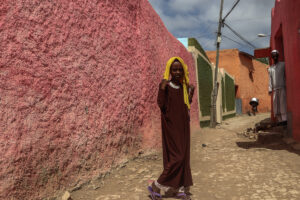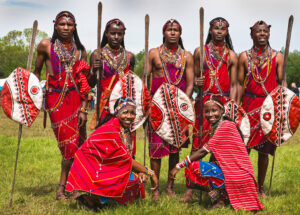Bahir Dar is the third largest City in Ethiopia after Addis Ababa and Dire Dawa. This bustling city is well maintained and clean with an amiable atmosphere, and is famous for its historic monasteries, the Blue Nile Falls and Lake Tana. Bahir Dar is an amazing city and safe to visit compared to other cities in neighboring countries. The city is incredibly refreshing with clean well-kept sidewalks and palm shaded streets. The fresh, breathy air makes it the perfect getaway destination from the heavy air of big cities like Addis Ababa. In 2002, the city also received an honorable mention at the 2000-2001 UNESCO Cities for Peace Prize in Marrakesh, Morocco. Bahir Dar became the capital of the Amhara Region in 1995.
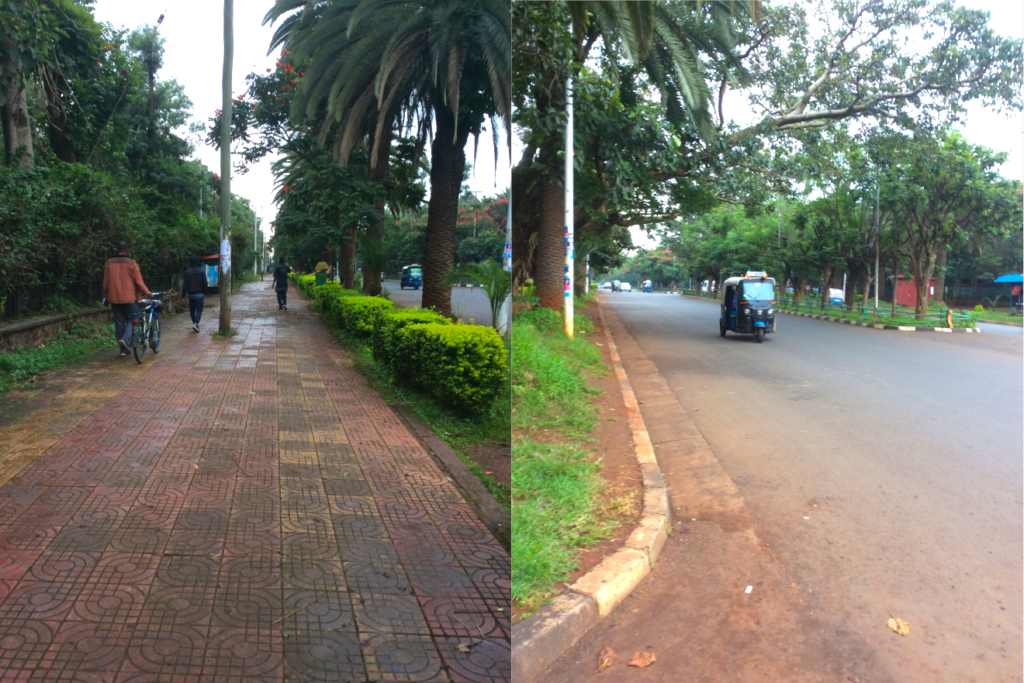
Right: Bahir Dar streets often occupied with Blue Auto Rickshaws known locally as bajaj
Bahir Dar being a tourist city, has a variety of hotels and restaurants to choose from according to your budget. When choosing a hotel pick one where you have a view of the lake. Lake view rooms can be requested, if available, with no additional cost.
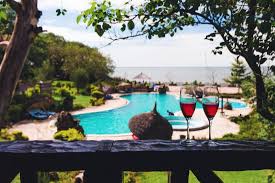
Evening walks through the city and a sit by the lake side to watch the sunset can be incredibly soothing activities for travelers who have free time after arriving in the day.
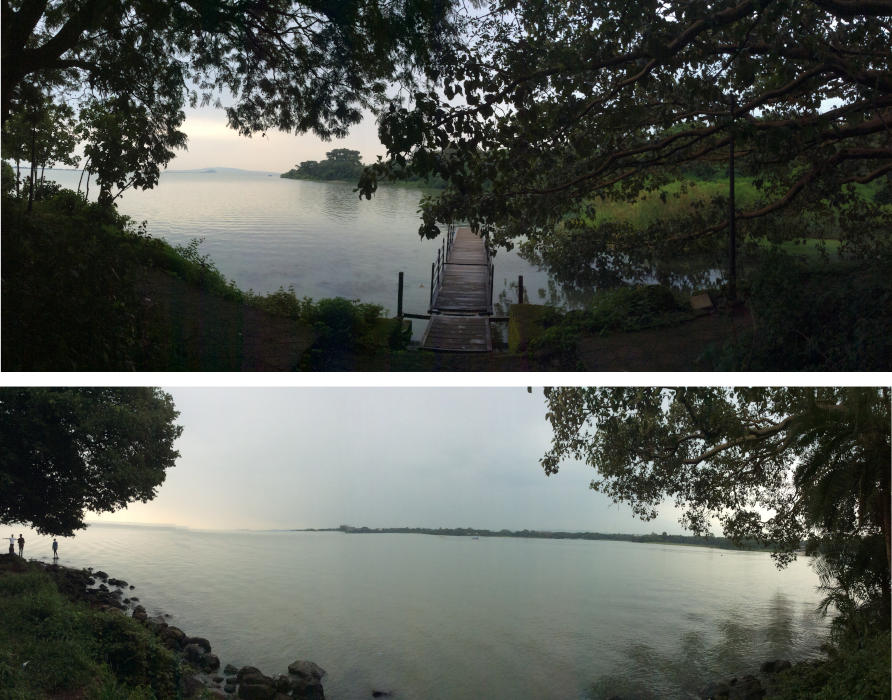
Bottom: View of Lake Tana from the lake side Park
Getting there
Air: Ethiopian Airlines has several flights per day from Addis Ababa to Bahir Dar which takes about 45 min. It is the most convenient and comfortable mode of getting there. The aerial view of Addis upon take off and flying over the lake while descending to Bahir Dar can be enjoyable.
Drive: A 10 hour drive can be arranged from Addis either privately or with public bus. Although this will be a long trip, the highlight will be that you get a personal feel of the Ethiopian landscape. It will also give you more time to converse with locals, be it your guide or fellow passengers.
- Lake Tana Tourist sights
Ura Kidane Mihret
This most frequently visited beautiful church was built in the 16th century. Its maqdas is covered in a stunning jumble of murals painted between 250 and 100 years ago. The paintings give a glimpse into medieval Ethiopia. A separate museum holds old crowns of Ethiopian Kings, leather bound bibles and other ancient artifacts.
The walk to the church has an adventurous ambiance with the sound of the trees shaken by Vervet Monkeys and butterflies fluttering over small pools. Birds such as parrots and hornbills can be spotted in the tress.
Azawa Mariam
Azawa Mariam can be found continuing from Ura Kidane Mihret by boat, or following a 1.5km footpath through thick forest for those that want to continue with the forest theme. It is adorned with several 18th century paintings and an attached treasury house containing antiques.

Narga Selassie
Situated on Dek Island and 3 hours boat ride from Bahir Dar, Narga Selassieis the most ornately decorated of the lake monasteries to visit. It was built in the 18th century for Princesses Mentewab. The main church, circular in shape and surrounded by stone pillars, is enclosed in a compound with domed turrets. The inner walls are edge to edge covered in paintings thought to date from the 18th century.
A visit to Ura Kidane Mihret and Narga Selassie would be a full day trip, including visits and return. For half day trip one can visit Ura Kidane Mihret and Azawa Mariam.
Blue Nile falls
Originating at Lake Tana, the Blue Nile Falls is one of Africa’s most spectacular waterfalls plunging over a 45m high rock face and locally known as Tis Isat. The 160m wide falls is usually best enjoyed in the rainy season (May to October), when the thunderous sound can be heard from far. Its length is about 907 miles (1,460 km) and joins the While Nile in Khartoum forming the longest river in the world – The Nile River.
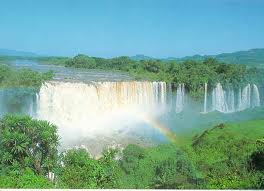
Getting there
First you must drive 38 km southeast of Bahir Dar to TisIsat where the ticket office is, and tour guides can be found. Then it is possible to either take a 45 min walk on a 2.2km route, of which 1.2km can be done by car. Another option is to walk through the village for about 500m then take a motorboat ride crossing the river then another 1km walk to the falls.
The longer path is more adventurous crossing the river below on the Alata Bridge, some dense riverine woodland that offers good birding, and the suspension bridge over the gorge, just before the falls, built in 2009.
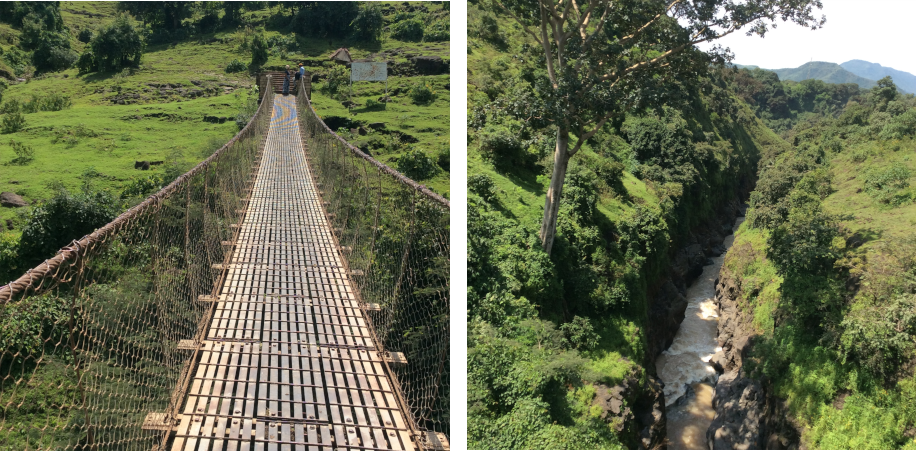
The shorter path takes you through picturesque countryside with traditional huts, sugar cane and chat farms. Blue Nile camping is also found on this path close to the falls for those that would like stay near the falls.
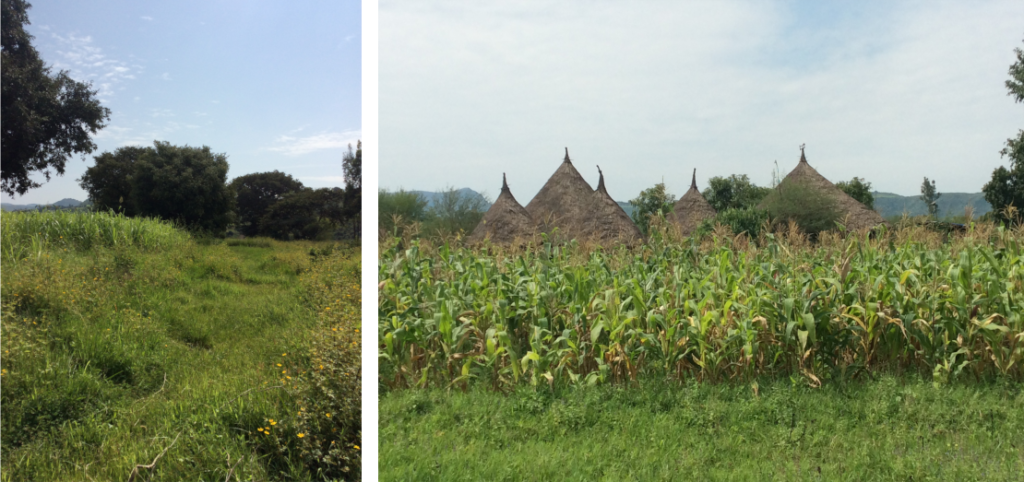
Tips: The Blue Nile Falls trip is best enjoyed in the morning while a rainbow can be seen on the falls on a sunny day and before the afternoon sun starts roaring. If you find yourself in the area past 11 in the morning make sure to bring along hats, sunscreen and a good set of shades. Bring a raincoat if planning on getting close to the falls as the spray reaches anything with in a 500m radius. The water is muddy in the rainy season while white at other times, but the amount not as awe inspiring in the dry seasons.

